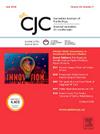Factors Associated With Shock at Presentation in Kawasaki Disease Versus Multisystem Inflammatory Syndrome in Children Associated With Covid-19
IF 5.8
2区 医学
Q1 CARDIAC & CARDIOVASCULAR SYSTEMS
引用次数: 0
Abstract
Background
While clinical overlap between Kawasaki disease (KD) and multisystem inflammatory syndrome in children (MIS-C) has been evident, information regarding those presenting with shock has been limited. We sought to determine associations with shock within and between diagnosis groups.
Methods
The International KD Registry enrolled contemporaneous patients with either KD or MIS-C from 39 sites in 7 countries from January 1, 2020, to January 1, 2023. Demographics, clinical features and presentation, management, laboratory values, and outcomes were compared between the diagnosis and shock groups.
Results
Shock at presentation was noted for 19 of 672 KD patients (2.8%) and 653 of 1472 MIS-C patients (44%; P < 0.001). Within both groups, patients with shock were significantly more likely to be admitted to the intensive care unit, to receive inotropes, and to have greater laboratory abnormalities indicative of hyperinflammation and organ dysfunction, including abnormal cardiac biomarkers. Patients with KD and shock had a greater maximum coronary artery z score (median +2.62) vs KD patients without shock (+1.36; P < 0.001) and MIS-C patients with shock (+1.45 [vs +1.32 for MIS-C patients without shock]; P < 0.001). They were also more likely to have large coronary artery aneurysms. In contrast, MIS-C patients with shock had lower left ventricular ejection fraction (mean 51.6%) vs MIS-C patients without shock (56.6%; P < 0.001) and KD patients with shock (56.7% [vs 62.8% for KD patients without shock]; P = 0.04).
Conclusions
Although patients with KD presenting with shock are clinically similar to patients with MIS-C, especially those with shock, they have more severe coronary artery involvement, whereas MIS-C patients with shock have lower left ventricular ejection fraction.
川崎病与COVID-19相关儿童多系统炎症综合征患者出现休克的相关因素
背景:虽然川崎病(KD)和儿童多系统炎症综合征(MIS-C)的临床重叠已经很明显,但有关以休克为表现的患者的信息有限。我们试图确定诊断组内和诊断组之间与休克的关联。方法:国际KD登记处从2020年1月1日至2023年1月1日招募了来自7个国家39个地点的同时患有KD或MIS-C的患者。在诊断组和休克组之间比较人口统计学、临床特征和表现、管理、实验室值和结果。结果:672例KD患者中有19例(2.8%)出现休克,1472例中有653例(44%)出现休克;结论:虽然KD患者表现为休克与MIS-C患者临床相似,尤其是伴有休克的患者,但其冠状动脉受累更严重,而伴有休克的MIS-C患者左心室射血分数更低。
本文章由计算机程序翻译,如有差异,请以英文原文为准。
求助全文
约1分钟内获得全文
求助全文
来源期刊

Canadian Journal of Cardiology
医学-心血管系统
CiteScore
9.20
自引率
8.10%
发文量
546
审稿时长
32 days
期刊介绍:
The Canadian Journal of Cardiology (CJC) is the official journal of the Canadian Cardiovascular Society (CCS). The CJC is a vehicle for the international dissemination of new knowledge in cardiology and cardiovascular science, particularly serving as the major venue for Canadian cardiovascular medicine.
 求助内容:
求助内容: 应助结果提醒方式:
应助结果提醒方式:


